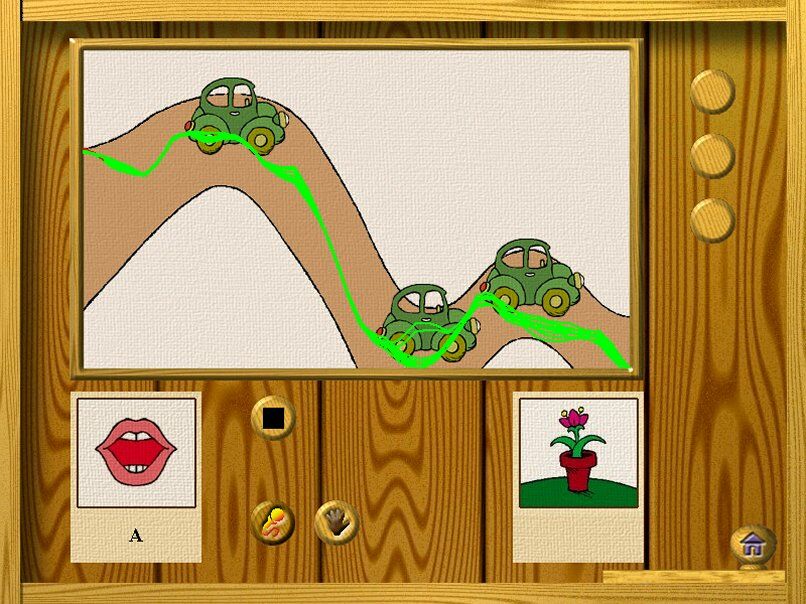Rhytm
Dynamics
Auditory spectrum



The Visual Presentation
The concept of this system is to visualize the speech at a low level of speech processing and to let the child use his or her high level information processing ability to work on this. The aim of this method is to teach children how they can obtain information from visual speech pic-tures (Campbell, 1998). A detailed examination has been prepared to decide which numerical scale of loudness, pitch contour, spectral distribution, and so on, gives the most informative visual presentation (speech pictures) about these parameters. For example, how is it possible to draw the children's attention to the areas of maximum energy in the spectrogram? How is it possible to encourage the child to use correct loudness and intonation levels? How can the child recognize if he or she is pronouncing sounds with inappropriate rhythm, and so on? Generally, we use different amusing background drawings to help the child find the important part of these speech pictures. Examples are shown in Fig.
|
Rhytm |
Dynamics |
Auditory spectrum |
|
|
|
|
Speech pictures
Examples of the types of speech pictures are the following: Energy changing in time; funda-mental frequency; voiced or unvoiced detection; intonation; spectrum; spectrogram (cochleogram), spectrogram differences.
Created on November 28, 2001